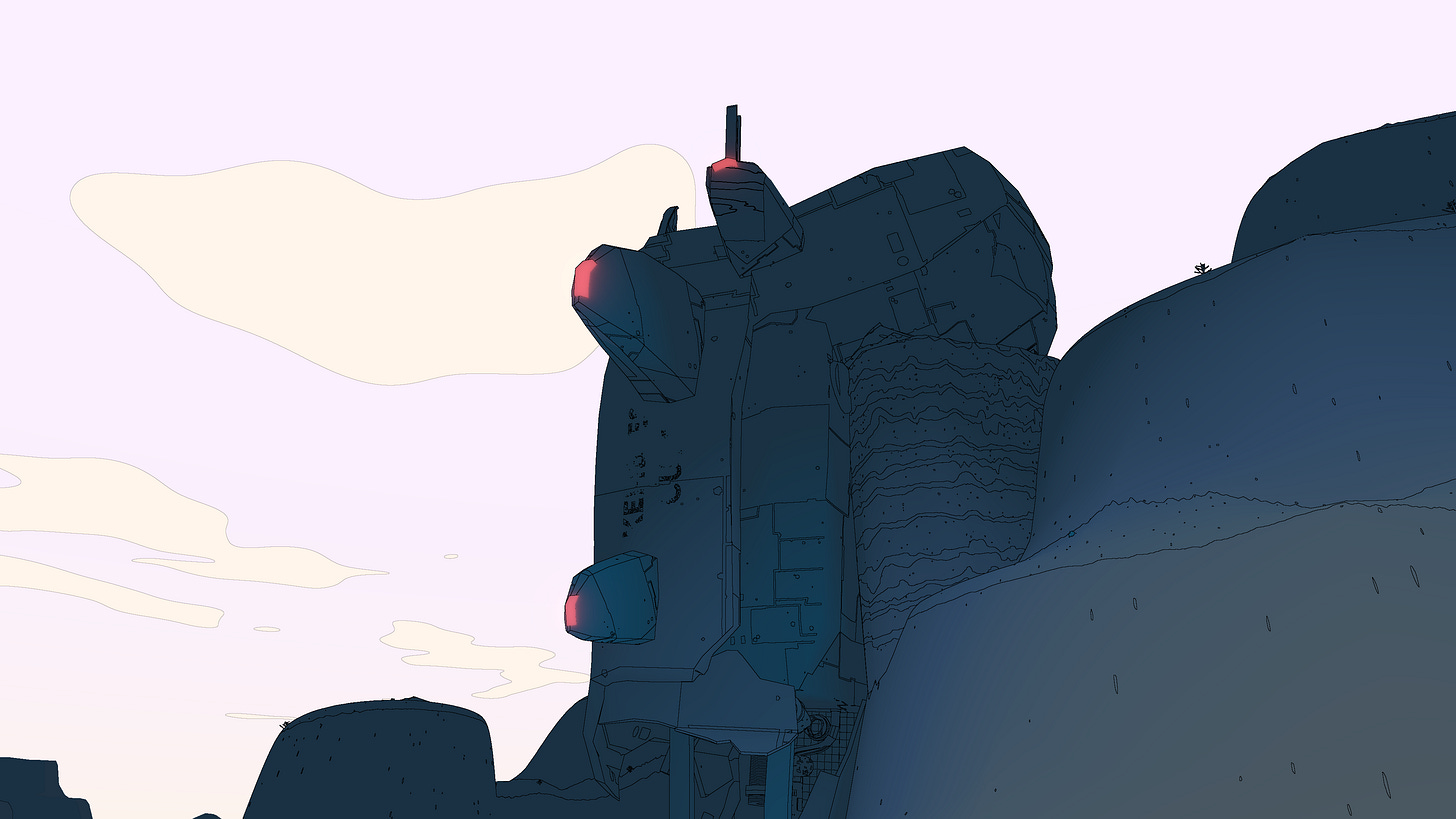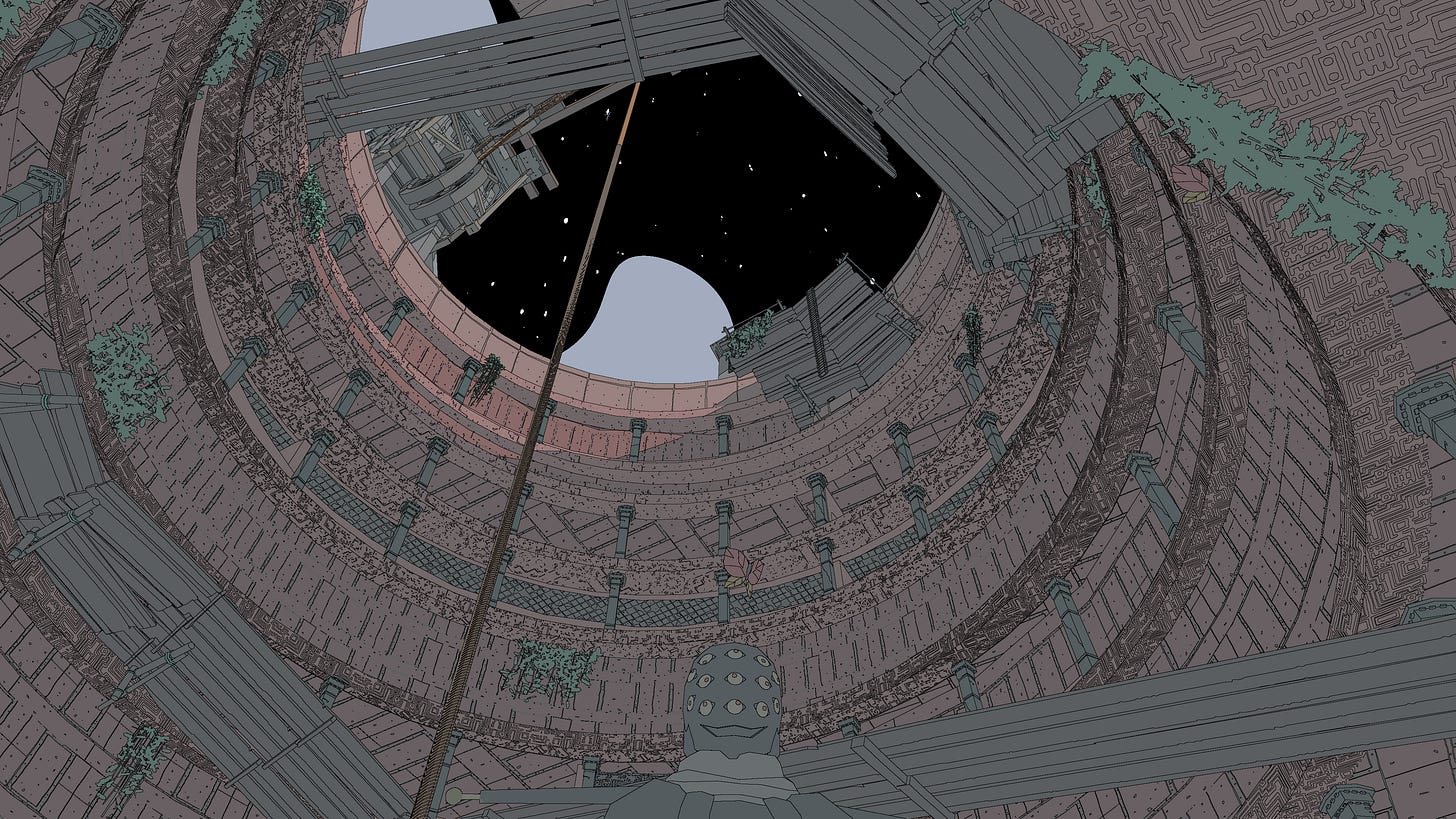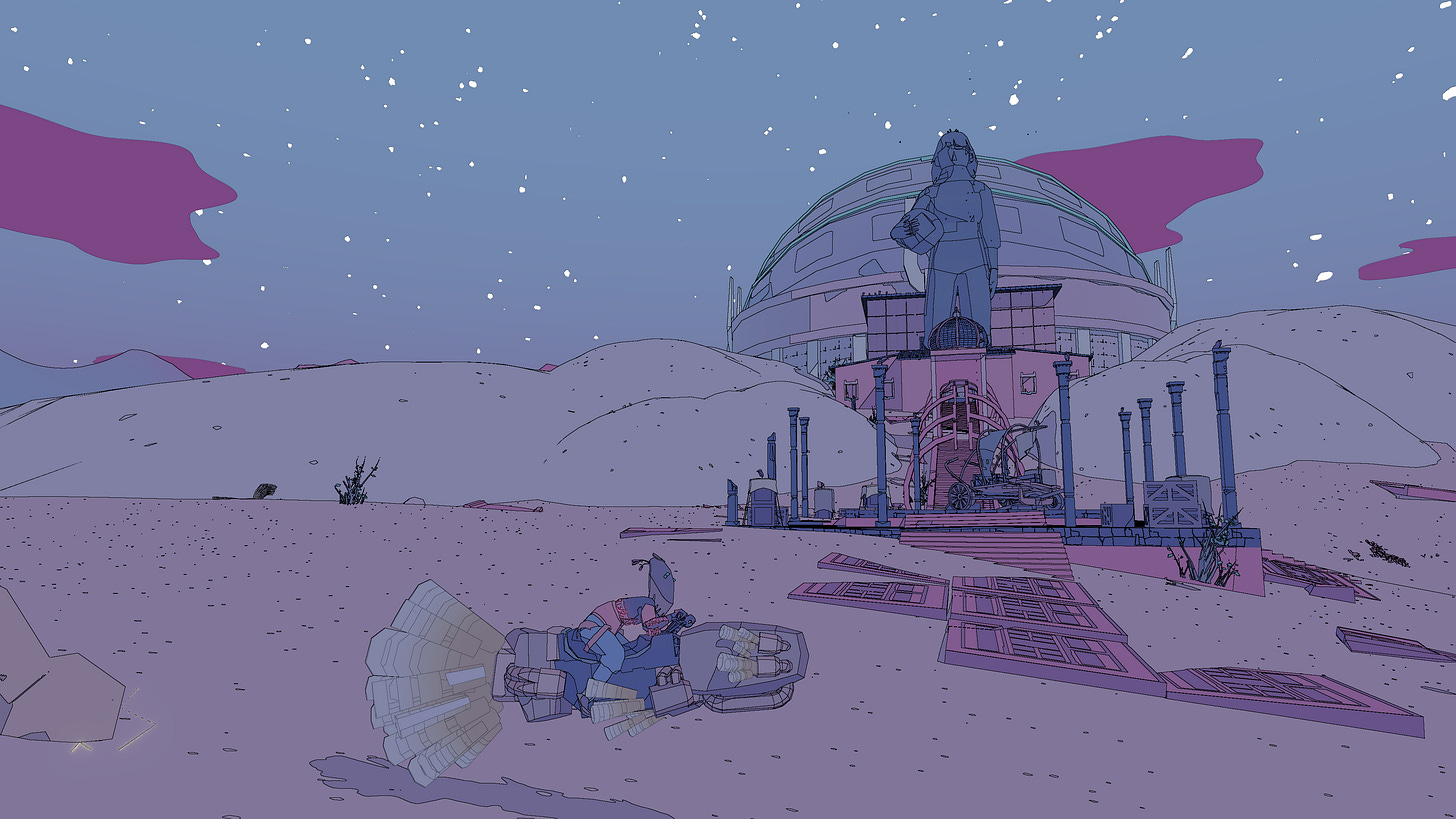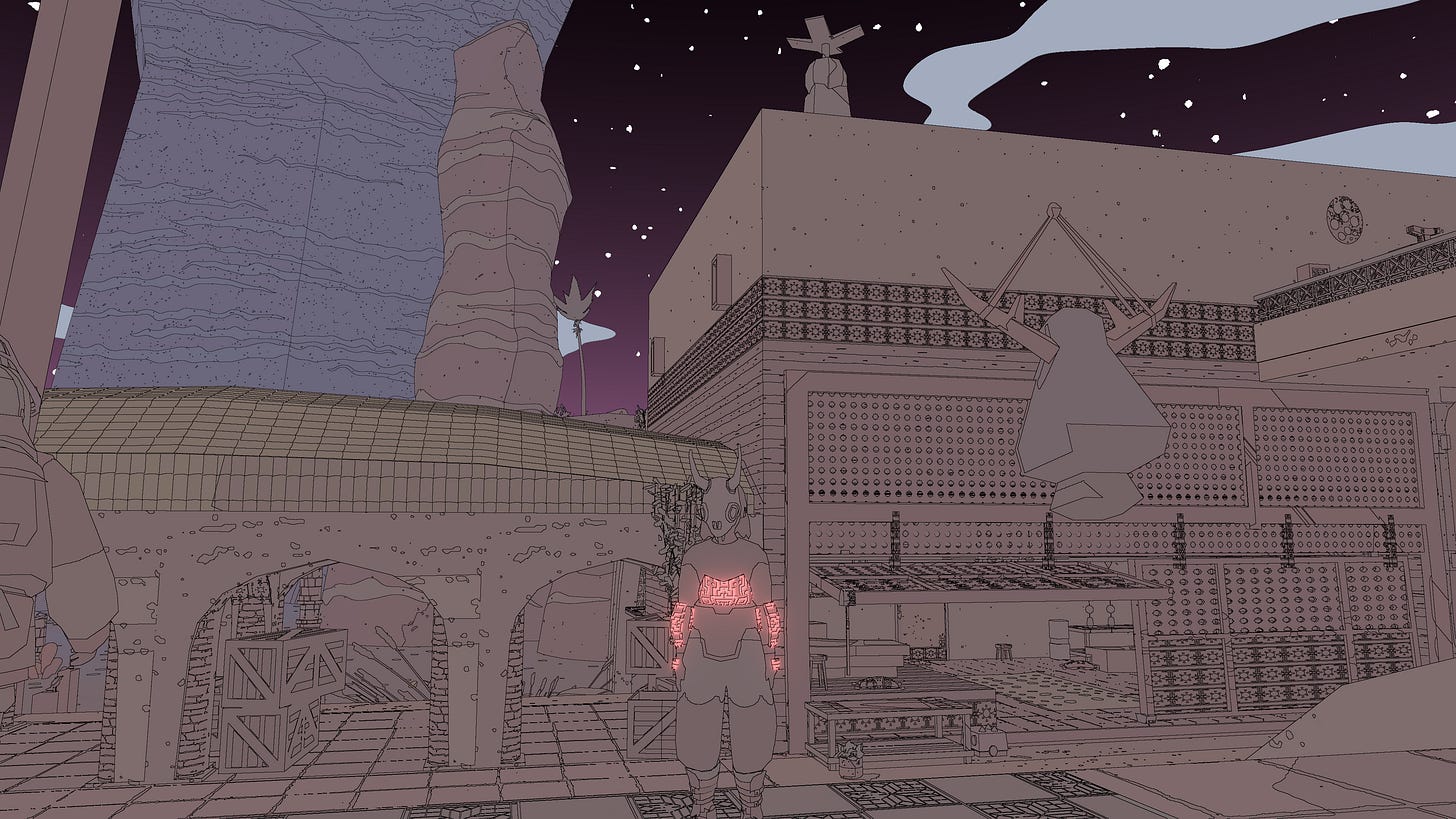Sable
Architecture in games can be a lot of things. It can be convincing, it can be whimsical, it can be an homage, etc. Rarely have I seen architecture be many of those things at the same times (Studio Ghibli films come to mind). I am hard pressed to think of a video game with more interesting architecture than Sable.
The game itself is a simple and relaxing trek/coming of age story where you solve platforming puzzles and ride your hoverbike around ramping off sand dunes to a beautifully composed soundtrack. Quests are simple, the writing is cozy, and the world building is deep enough to intrigue while remaining coherent. Nearly every detail was considered down to the different fonts used between verbal speech and interior monologue. Probably the thing every single person will take away from this game is the Studio Ghibli inspired art and graphic design. It truly is transcendent and worthy of praise on its own.
I have been incredibly excited about this game for some time after seeing interviews with the two person team at Shedworks. The Creative Director Gregorios Kythreotis mentioned in interviews an inspiration from Studio Ghibli and comes from a background in architecture. After seeing early videos of the game world, I could not wait to see what Shedworks had created for us.
The architecture in Sable is modern and deeply phenomenological. I don’t think I’ve seen any other game create an experience this deep without drawing heavily on nostalgia and prior expectation. As an example:
In my one of my favorite video games Skies of Arcadia almost every single place is a direct stylistic reproduction of an existing style, or what we think an existing style is (Viennese, Japanese, etc.) without really creating anything new. The style itself has all sorts of embedded ideas that humans associate with it; relying on this cognitive shortcut, games can give you an idea of a culture of a place without you even needing to experience it.
That isn’t to say that Sable doesn’t draw on real world ideas (it didn’t invent the arch for instance), but it layers unique material on modern forms to create wholly new experiences and feelings. The area around the towns become the atmosphere for the towns instead of backdrop of a skin deep aesthetic.
Sable innovates heavily on the architecture and atmosphere of open world games in three major ways.
1. Modern Forms
As I previously mentioned, Sable experiments with modern forms in a game type that almost exclusively utilizes nostalgia imbued historic forms. Despite the modern forms (which can often be cold and oppressive), the architecture manages to create a comforting experience by utilizing exposed materials, beautifully detailed and reflective of nearby biomes. This allows the modern forms to belong to the biome without utilizing the typical tropey architectural detailing. These forms/materials combined with the next innovation create a beautifully layered atmosphere.

2. Atmospheric Perspective
One of the main elements that Leonardo Da Vinci utilized in his paintings that most other artists of the time did not is Atmospheric (sometimes called Aerial) Perspective. This gave his paintings a depth of realism. While some or most open world games utilize Atmospheric Perspective to some extent, the effect is often flaccid. Sable blends its world with different layers of Atmospheric Perspective resulting in rainbowed layers as the landscape disappears to the horizon. At the top of the Wind Tower (the photo at the top) there are 2 or 3 different layers of atmosphere. Coupled with the unique art style, the world feels fully realized.
3. Materiality
The first thing I was struck by in this world was how the materials were rendered. If you have ever used blender (or basically any other 3D rendering software), you know there are a number of ways to affect materiality to make it look more realistic or stylistic. Sable does away with the traditional way materials are rendered and opts for a courageously stylistic approach. Roughness is displayed through dense specks, or smoothness from a lack of specks. Rock layering is divided harshly with pen strokes rather than a blending of color one might expect in a canyon. Wood grains are deep and meaningful. These types of decisions could easily have gone awry, but the consistency of these technique throughout the different biomes successfully gives the world its own language for materiality which creates a convincing experience.
Everything this game does with architecture is incredibly difficult to do. Utilizing modern forms and making them as comforting as any nostalgia fueled Cathedral is something I strive for in everything I design. The way Sable accomplished these experiences reminded me of what architecture is and should be. I won’t be forgetting this experience any time soon and I’m sure I’ll be back from time to time.
To finish out, a few of my favorite designs and moments.















